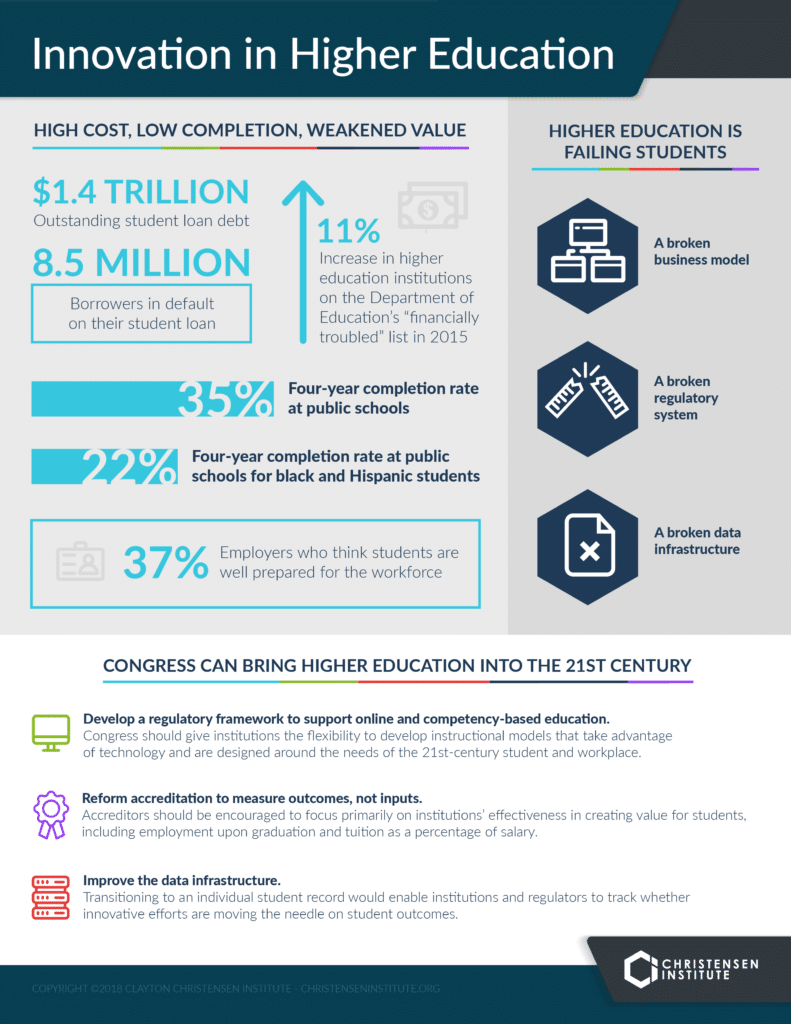EXECUTIVE SUMMARY
Higher education expenditures have ballooned to nearly half a trillion dollars a year, but despite rising costs, it is unclear that higher education is succeeding at its core mission: graduating students prepared for today’s dynamic world.
Four-year completion rates for students at public schools are below 35 percent, and there continue to be massive disparities in outcomes based on race and class. The combination of low completion rates and high costs makes enrolling in college a risky proposition for students. Salaries for college graduates, adjusted for inflation, have remained flat since the 1960s, even as costs have risen dramatically. Employers are also dissatisfied; they struggle to fill positions and express frustration with recent college graduates’ skill sets.
These problems stem from a business model that was never designed to serve students, a regulatory model that reinforces that broken business model and spurns innovation, and a lack of data to hold colleges and universities accountable.
But there are bright spots on the horizon. Online learning has made college accessible to students for whom college was previously an impossible dream. A few innovative schools are demonstrating the potential of online and competency-based education to bend the cost curve of college, create value for students, and align with the needs of a globally competitive workforce. Outside of traditional higher education, alternative providers are going even further, demonstrating the potential of innovation to address the cost, access, and workforce alignment problems currently plaguing traditional institutions.
The Higher Education Act, as written, is not supportive of innovation. But Congress can help:
Develop a new regulatory framework for online and competency-based education. Congress should aim to give institutions the flexibility to develop instructional models that take advantage of the potential of technology, and are designed around the needs of the 21st-century student and workplace.
Reform accreditation to measure colleges by their outcomes, not their inputs. Accreditors should be encouraged to focus primarily on whether institutions are creating value for students. Colleges that do so should be given wide latitude in how they do so.
Improve the basic data infrastructure of higher education. Transitioning to an individual student record would enable institutions and regulators to track whether innovations are effectively moving the needle on student outcomes.



